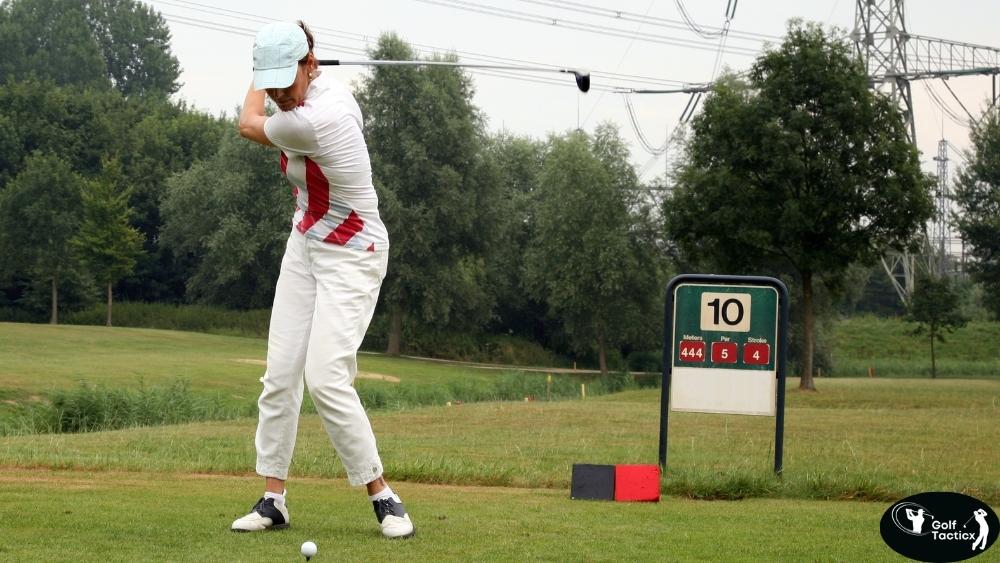In our previous posts, we’ve covered strength exercises to improve your swing stability and flexibility to enhance your turn. Now, let’s focus on preparing your body for a successful round with effective warm-up drills. A proper warm-up not only primes your muscles but also helps prevent injuries and boosts your performance on the course.
Getting ready for a round of golf isn’t just about packing your clubs and heading to the course. To play your best, you need to prepare your body and mind. That’s where Effective Warm-Up Drills to Prepare for Golf Round come in. These drills help improve your flexibility, focus, and swing performance. In this article, I’ll guide you through some simple warm-up steps that can help you feel confident before you hit your first shot.
Why Warming Up Matters in Golf
Golf may seem like a slow-paced sport, but it demands a lot from your body. You need strong muscles, flexibility, and good balance. Jumping straight into your game without warming up can lead to tight muscles, poor swings, and even injuries.
That’s why using Effective Warm-Up Drills to Prepare for Golf Round is so important. Just like a car needs time to warm up before driving smoothly, your body needs a gentle start to perform at its best.
Start with Light Cardio (5–10 minutes)
Begin your warm-up with some light movement to get your blood flowing. You don’t have to run or do anything intense. Just a simple walk around the parking lot or course will work. You can also do light jumping jacks or stretch your legs while walking.
This helps wake up your muscles and joints and gets you in the mood for the game ahead.
Dynamic Stretching
After light cardio, move on to dynamic stretches. These are moving stretches, not the ones where you hold one pose for a long time. Dynamic stretching is great for warming up without making your muscles tight.
Here are a few easy ones:
- Arm circles – Stretch your shoulders and arms with small and large circles.
- Torso twists – Stand tall and twist side to side to loosen up your back and hips.
- Leg swings – Swing one leg forward and backward, then side to side.
These movements prepare your whole body for the golf swing motion.
Practice Air Swings
Next, practice a few air swings without a ball. Use a wedge or 7-iron and swing gently. Focus on balance and smooth motion. This helps your muscles remember how to move correctly.
Start slow, then gradually increase your speed. Practicing air swings is a great part of Effective Warm-Up Drills to Prepare for Golf Round because it connects your mind and body before hitting the first real shot.
Stretch Key Muscles
It’s helpful to do a few simple stretches to loosen key muscles you use in golf. These include:
- Shoulders
- Back
- Hips
- Hamstrings
You can try toe touches, side stretches, and shoulder rolls. Don’t force your body—stretch gently to avoid injury. If you’re short on time, even 5 minutes of focused stretching can make a big difference.
Hit a Few Balls on the Range
If your golf course has a driving range, use it! Start with your short irons and work your way up. Don’t worry about hitting far. Just focus on making clean, solid contact with the ball.
Try this simple routine:
- 5 shots with a wedge
- 5 shots with a 7-iron
- 5 shots with a hybrid or fairway wood
- 5 shots with your driver
This drill helps you warm up every part of your game. It’s one of the most Effective Warm-Up Drills to Prepare for Golf Round because it mirrors what you’ll be doing on the course.
Short Game Practice
The short game is where most shots are made, so don’t skip this step! Spend 5 to 10 minutes chipping and putting.
For putting:
- Practice short 3 to 5-foot putts.
- Try lag putts from 20-30 feet to build feel.
For chipping:
- Use your wedge to chip onto the green.
- Focus on your touch and aim.
Warming up your short game will boost your confidence when it’s time to score on the course.
Mental Preparation
Golf isn’t just physical—it’s also a mental game. Spend a few quiet minutes focusing on your breathing. Take deep breaths and think positively about your game.
You can also picture yourself hitting good shots. Visualization is a powerful tool. It helps you walk onto the first tee feeling calm and focused.
This is an often-overlooked part of Effective Warm-Up Drills to Prepare for Golf Round, but it’s just as important as the physical steps.
Use the Same Routine Before Every Round
Building a warm-up routine and sticking to it is key. Over time, your body will get used to the steps, and your game will improve. You’ll feel more relaxed and ready every time you play.
Try to give yourself at least 30 minutes before your tee time to do your warm-up drills. That way, you’re not rushed or stressed.
Tips to Keep in Mind
Here are some quick tips to help make your warm-up better:
- Dress comfortably – Wear clothes that let you move easily.
- Stay hydrated – Drink water before and during your round.
- Avoid long static stretches before playing—they can weaken your swing power.
- Listen to your body – If something hurts, stop and rest.
- Keep your mind calm – Don’t overthink your swing during warm-up.
Conclusion
Effective warm-up drills are essential to ensure you perform at your best on the golf course. By incorporating dynamic stretches and targeted movements, you can enhance flexibility, improve focus, and prevent injuries. A proper warm-up helps prepare both your body and mind, setting you up for a successful round.
Getting your body ready is the first step to playing better golf. The goal of Effective Warm-Up Drills to Prepare for Golf Round is not just to loosen your muscles but to sharpen your focus and build confidence.
Remember, the pros never start a round without warming up—and neither should you! Just 20–30 minutes of the right drills can help you avoid injuries, swing better, and enjoy your time on the course.
So, next time you’re getting ready to play, use these Effective Warm-Up Drills to Prepare for Golf Round and give yourself the best chance to succeed.
In the next post, we’ll dive into a key question every golfer faces: How do I prevent fatigue during long rounds? Stay tuned for practical tips and strategies.
















Leave a Reply